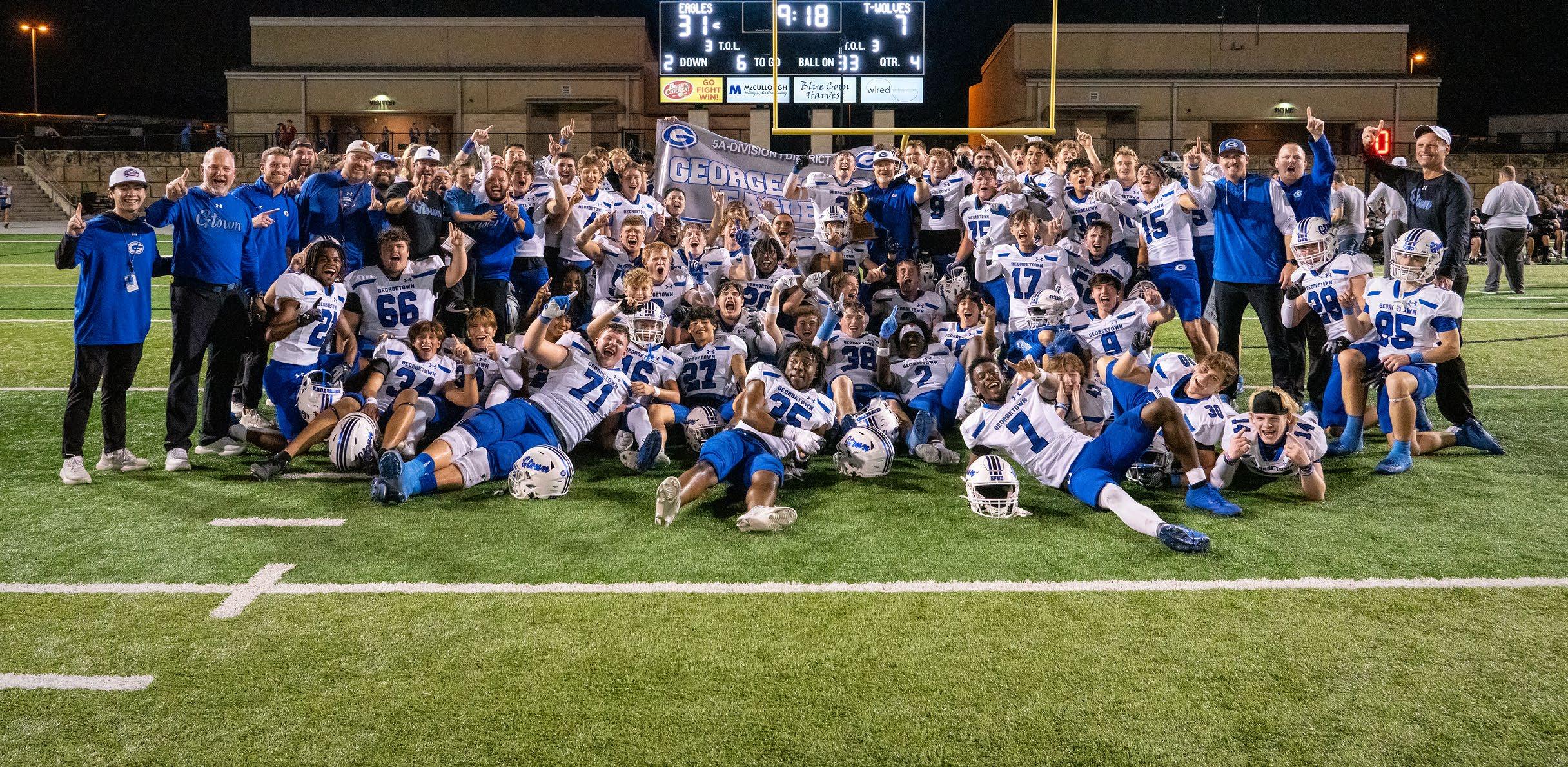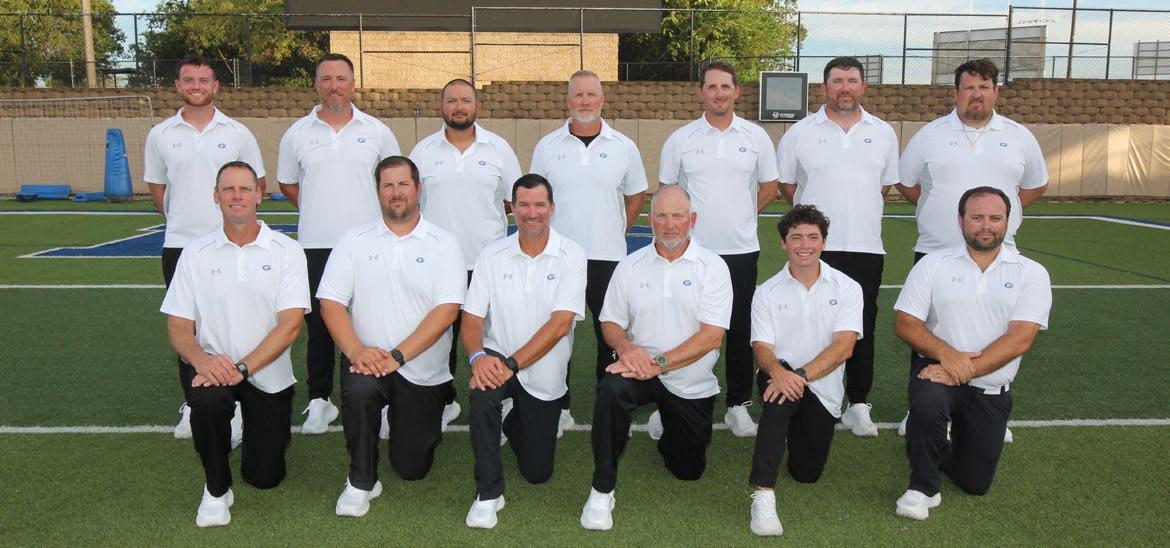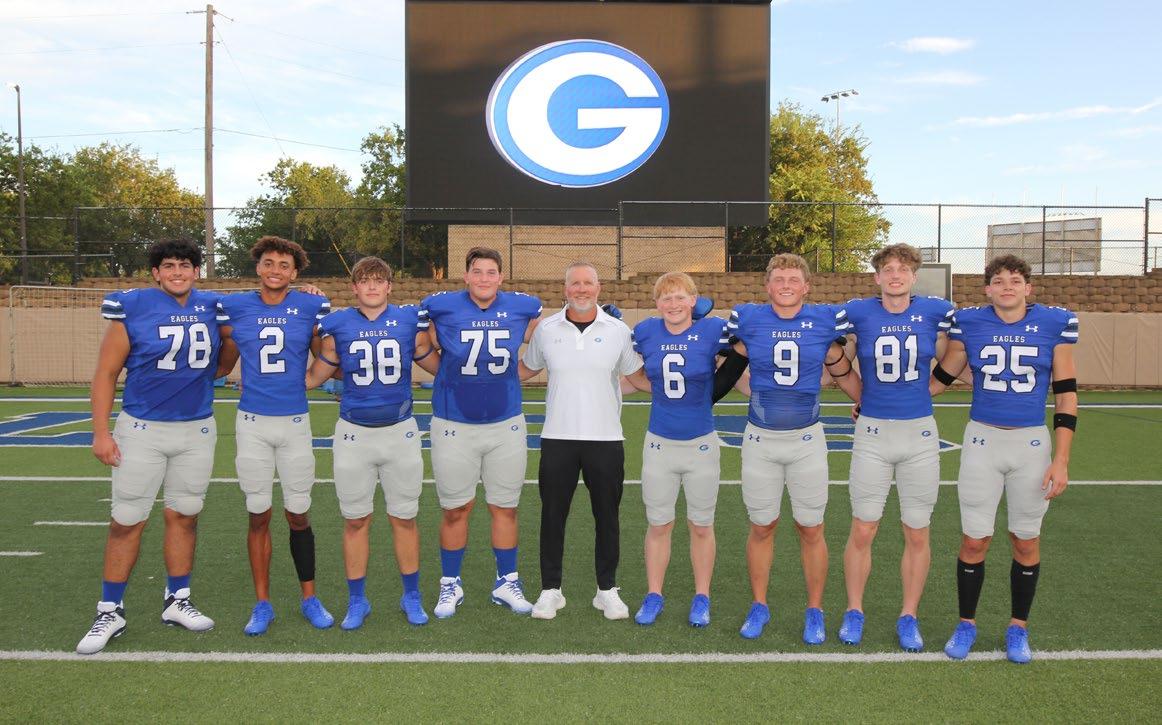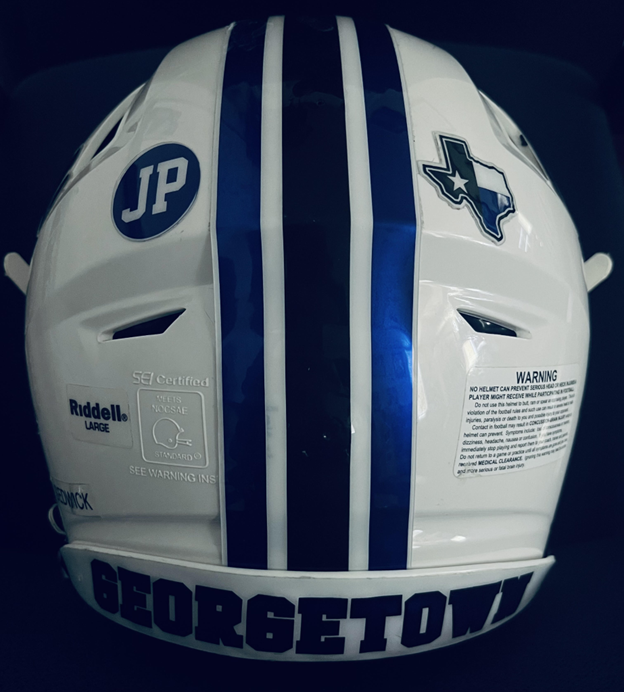
8 minute read
CULTURE DRIVERS
By: Chuck Griffin Athletic Coordinator/Head Football Coach - Georgetown HS
What drives your culture? We talk about that word a great deal; but what is it, and what drives it? In 2024, the Georgetown Eagles had a special season. The success came despite dramatic staff changes in the spring, and a heartbreaking tragedy during the season. The players and program demonstrated resilience and strength of character as we went onto a 49-2-1 season at the high school, with our varsity finishing 10-2 as District Champions for the second time in three years. This doesn’t happen by accident. There must be a plan and a set of beliefs that drive your players, your coaches, and your parents. When change or tragedy occur, these beliefs will drive your expectations and in turn, drive your actions.

Offseason Planning
As a staff, we begin each year with a retreat. We head off for a few nights on a long weekend in January, and this has proved to be one of the most beneficial exercises for our staff. We plan everything all the way through our first game. We talk specifically about every player in the program and try to personnel our next three years of our varsity football team; and we also figure out what we want to study as a staff in the spring. We left our retreat in January of 2024 with a general consensus on the staff: that this was the best staff we had ever been on. Our coaches worked hard, were great at their respective roles, and we had an outstanding camaraderie – then sudden change hit.
Within just a few weeks of that retreat, both our OC and DC landed their first head coaching job. I was extremely proud of those guys, but it was a huge hit for our staff. Together they had 14 years of Eagle Football experience and had worked for not only me, but also our previous head football coach. They had a huge part in developing our culture over the last decade. As these two coaches began to work on their respective staffs, we would ultimately lose four more coaches to coordinator positions. Each one of those guys stepped out into a new role that was in a positive direction for their career; but man, it was tough on Eagle Football. Thankfully, with the support of a great administration team, we were able to hire two current head coaches, two current coordinators, and two young coaches to our staff. The challenge would be getting all of these new faces and new schemes integrated into our culture and to keep moving forward.
Teaching Our Culture
Eagle Football has a set of long-held beliefs about our program that drives the expectations of our coaches, our players, and our parents; and results in practices that are shared by the group. We call this our GTDNA, our GeorgeTown DNA. These beliefs are the blueprint to who we are, and have had a great deal to do with the success of our program over the last several years.
One of the first things we do as we start each off-season is our “Champions Notebook”. Each year, our coaches write and develop a lesson on one of the key principles in our GTDNA. We compile this into a notebook for our players. Once a week, one of our coaches teaches this lesson before our workout in the morning; we call this our “Book-Talk”, and we follow up with a group discussion about this topic the following day at breakfast after we workout. Our Champions Notebook has proved to be a vital piece of teaching our beliefs, our value system, and getting everyone to believe in who we are.
Our parents are also included. SportsYou has been a game changer when it comes to parent communication. Each week, I use it to send the parents a message of where our program is and where we are going. In addition, I release a message on the day of the book-talk to help drive some dinner table conversions over the principle we are discussing. If you have been coaching for any length of time, then you know we can lose a player at the dinner table. So our goal is to help our parents drive our beliefs into a positive direction.

Developing our culture also includes developing our coaches. Five years ago, we started bringing in someone from the outside to teach and lead our coaches through a book study. I wrote an article for THSCA on this in March of 2023. We bring in someone from the community who is a stakeholder in Eagle Football being successful, but does not have any real connection to our program. He has kids in our school, but not in football. He has led many organizations at a high level and wants to see that for our community. We don’t talk about football at all. It is about our organization and how we can improve it and how we can each personally improve as a leader and coach. It is really a masters-level psychology class. This exercise has proved to be invaluable for our staff. We, as a staff, get to study what we preach to our kids. It is just another layer of our culture.
When Tragedy Strikes
We had a great start to our season. All five teams won the first three weeks, we were learning our new schemes and our coaches were adjusting to their new roles. After all of the turnover, we started with six new coaches and eight guys in new sports. Things were rolling, and then tragedy struck. One of our young players was severely injured in an automobile accident which included several of our other players. We went from disbelief, to hope, to despair over the next few weeks as we watched this young man succumb to his injuries and eventually pass away.
As we dealt with the death of one of our own, our culture was severely tested. Was it all talk? Did we actually believe the things we talked about? Would our actions prove to represent GTDNA? Thankfully, the answer to those last two was yes. Our players and community rallied around this young man's family, the players that were also involved, and each other. Our season was dedicated to this young man, who he was, and his memory. In a season that tested these young men like never before, they soared. They leaned on the culture of unity and perseverance that had been instilled in them. Their reliance became the heartbeat of our season and a tribute to their fallen teammate. They proved their mettle – their GTDNA.
What drives the culture?
There are two key items that I consider when evaluating our programs' performance. Number one: “Is the job getting done?” and number two: “Is the team coming together?” There are so many things in high school athletics that are out of our control, but these two, they can be evaluated. Trust, safety, and belonging are key in the team coming together. Football is a high-risk activity, but you can do high-risk things as an organization if you have trust. It takes these things to get the job done, to bring the team together. One thing this doesn’t mean is happiness. Not everyone is going to be happy. But we can ask the question: Do we trust each other, as players, as coaches, as parents? If we do, there are so many things that we can achieve.
One of the last layers of our culture is our “Leadership Council”. This group of players is elected by their teammates in the spring. Each position group is represented and each member has a significant role. These guys are chosen as leaders because they meet certain characteristics and their teammates recognize that. As the head coach, this becomes my position group. We meet regularly during the spring, summer, and fall to prepare them to lead the team. We have studied books like, "Chop Wood Carry Water", "Win in the Dark", "The Locker Room", "The Team Captain Leadership Manual", and "The Twin Thieves". Our goal is to help these leaders into a position where they can see what is happening with the team honestly and objectively. They help me find out where we need to concentrate, where we need to improve, who we need to love on, who we need to straighten out. They become a valuable conduit between me and the locker room. They can help make sure the message gets across in the locker room, and to make sure that I can see what the issues are.
Challenge
So what are your culture drivers? This is not an exhaustive list, but it is a start. Culture is more than a sign or a slogan. It is a system of long-held beliefs about your program, the expectations of all of the parties involved, and the practices that are shared by everyone. It is an ever-changing idea. It must be thought about, directed, and evaluated. It must be taught at every level and addressed at every turn. What drives your culture?









